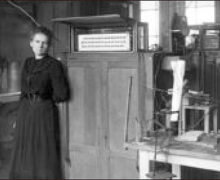
¿Tomamos un Café?
Shall we have a coffee?
En Etiopia, en el siglo XIII, un pastor llamado Kaldi descubrió que sus cabras, después de comer unos “frijoles” de cierto árbol, se volvían enérgicas y a la noche no podían dormir.
Desde el Siglo XIII
Kaldi se preocupó por su rebaño y recolecto parte de aquellos “frijoles”, llevándolos al Abad del Monasterio, quien los dejo hervir en agua, resultando en un líquido negro que bebió, descubriendo que lo mantenía despierto y alerta durante todo el día.
El Abad compartió la receta con otros monjes del monasterio, que llevaron los “frijoles energizantes” por toda la península arábiga, donde fueron bautizados “Qahwah” (vino oscuro). Luego, para identificar su origen se lo llamo “Kaffa”, que era el reino de Etiopía de donde la planta era nativa.
Al pasar al imperio Turco se lo llamo “Kahve” (vino caliente) y, en el siglo XV, los holandeses lo llamaron “Koffie”. Dos siglos después los ingleses la renombraron “Coffee”: bebida caliente que en poco tiempo se popularizó en todo el continente.
Cafeterías
En Constantinopla del siglo XVI se crearon las primeras cafeterías y, debido a que el Corán prohíbe el consumo de alcohol, esta nueva bebida energizante desplazo al té en popularidad.
Las cafeterías se convirtieron en lugares de reunión y debate de políticos e influyentes.
En poco tiempo quienes gobernaban y tomaban decisiones invadieron las cafeterías para sus discusiones políticas, eventos comunitarios y allí donde los comerciantes concertaban sus transacciones,
En el siglo XVII los reyes de Inglaterra y Alemania intentaron prohibir las cafeterías, por ser la raíz de la difusión de opiniones políticas durante la Ilustración. No tuvieron éxito.
Café en América
En 1714, el alcalde de Ámsterdam obsequió una planta de café al rey Luis XIV de Francia, quien mandó plantarla en el Real Jardín Botánico de París, en 1723 un gajo de esta planta llega a la isla de Martinica y, de allí en poco tiempo conquistó el Caribe, América Central y América del Sur.
Los ingleses que desde 1607 vivían en América del Norte era adictos al té, hasta que en 1773 el Rey Jorge III de Inglaterra, aumentó el impuesto a la exportación de té.
Este hecho provocó la rebelión de los colonos, generando una gran revuelta conocida como el Motín del Té de Boston, marcando un punto de inflexión que cambio para siempre la preferencia de consumo de los estadounidenses del té al café.
Por esto al café se lo denomina la «bebida patriótica», porque algunos sostienen que el Motín del Té en 1773 fue el “empujón” necesario para llegar a la independencia en 1776.
Café en Europa
Cuando el café llegó a Venecia en 1615, el clero lo condenó llamándolo la «invención de Satanás».
Esto causó la intervención del el Papa Clemente VIII, quien decidió probar la bebida.
La disfrutó tanto que exigió que le enviaran varias bolsas de Coffe y, con la aprobación papal, el camino se allano completamente.
Así, las cafeterías se convirtieron en centros de actividad política y social en Inglaterra, Francia, Alemania, Austria y Holanda.
Los holandeses crearon grandes plantaciones en la isla de Java, expandiendo su cultivo a las islas de Sumatra y Célebes.
El café reemplazó rápidamente a las bebidas comunes, para el desayuno de la época, como cerveza y vino. Se comprobó que quienes bebían café en lugar de alcohol comenzaban el día alertas y llenos de energía, y la calidad de su trabajo mejoraba.
¿Un café?
Las cafeterías siempre han fomentado el intercambio de ideas, las reuniones y la expansión de la creatividad.
En ellas se gestan revoluciones, maniobras políticas, planes económicos o leer un libro, estudiar, tener una cita amorosa o conversar con amigos.
Los jóvenes obtienen allí su primer trabajo y los músicos su primera audiencia… ¡Los invito a disfrutar un buen café!
In Ethiopia, in the 13th century, a shepherd named Kaldi discovered that his goats, after eating some “beans” from a certain tree, became energetic and could not sleep at night.
Since the 13th century
Kaldi worried about his flock and collected some of those “beans,” taking them to the Abbot of the Monastery, who let them boil in water, resulting in a black liquid that he drank, discovering that it kept him awake and alert throughout the day.
The Abbot shared the recipe with other monks of the monastery, who took the “energizing beans” throughout the Arabian Peninsula, where they were baptized “Qahwah” (dark wine). Then, to identify its origin, it was called “Kaffa”, which was the kingdom of Ethiopia where the plant was native.
When it passed to the Turkish empire it was called “Kahve” (mulled wine) and, in the 15th century, the Dutch called it “Koffie”. Two centuries later the English renamed it “Coffee”: a hot drink that quickly became popular throughout the continent.
Coffee shops
In Constantinople in the 16th century, the first coffee shops were created and, because the Koran prohibits the consumption of alcohol, this new energizing drink displaced tea in popularity.
Coffee shops became meeting and debate places for politicians and influencers.
In a short time, those who governed and made decisions invaded the cafeterias for their political discussions, community events and where merchants arranged their transactions,
In the 17th century, the kings of England and Germany tried to ban coffee houses, as they were the root of the spread of political opinions during the Enlightenment. They were not successful.
Coffee in America
In 1714, the mayor of Amsterdam gave a coffee plant to King Louis He conquered the Caribbean, Central America and South America.
The English who lived in North America since 1607 were addicted to tea, until in 1773 King George III of England increased the tax on tea exports.
This event provoked the rebellion of the colonists, generating a great revolt known as the Boston Tea Party, marking a turning point that forever changed the consumption preference of Americans from tea to coffee.
This is why coffee is called the “patriotic drink”, because some maintain that the Tea Party in 1773 was the “push” necessary to achieve independence in 1776.
Coffee in Europe
When coffee arrived in Venice in 1615, the clergy condemned it, calling it the “invention of Satan.”
This caused the intervention of Pope Clement VIII, who decided to try the drink.
He enjoyed it so much that he demanded that several bags of Coffee be sent to him and, with papal approval, the way was completely smoothed.
Thus, coffee houses became centers of political and social activity in England, France, Germany, Austria and Holland.
The Dutch created large plantations on the island of Java, expanding their cultivation to the islands of Sumatra and Celebes.
Coffee quickly replaced common breakfast beverages of the time, such as beer and wine. It was found that those who drank coffee instead of alcohol started the day alert and full of energy, and the quality of their work improved.
A coffee?
Coffee shops have always encouraged the exchange of ideas, meetings, and the expansion of creativity.
Revolutions, political maneuvers, economic plans or reading a book, studying, having a date or talking with friends are brewed in them.
Young people get their first job there and musicians get their first audience… I invite you to enjoy a good coffee!
























